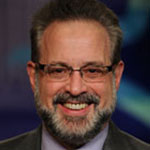25th Observance of World AIDS Day Approaching

Dr. Ronald Valdiserri
In just a few weeks, we will commemorate the 25th annual observance of World AIDS Day. Preparations for this milestone observance are underway here at the Department of Health and Human Services as well as at other U.S. government agencies that are partners in the domestic and global response to HIV/AIDS. This year we are coming together under the World AIDS Day theme, “Shared Responsibility: Strengthening Results for an AIDS-Free Generation.”
World AIDS Day brings together people from around the world to raise awareness about HIV/AIDS and to demonstrate international solidarity in the face of the ongoing pandemic. Marking the day provides an opportunity for public and private partners to spread awareness about the status of the pandemic and encourage further progress in HIV/AIDS prevention, care and treatment everywhere around the world. World AIDS Day also offers each of us the opportunity to show support for people living with HIV, remember loved ones and colleagues who have died from the disease, and renew our commitment to combat HIV-related stigma in all its forms.
According to estimates by WHOExit Disclaimer and UNAIDSExit Disclaimer, 35.3 million people were living with HIV at the end of 2012. That same year, some 2.3 million people became newly infected, and 1.6 million died of AIDS-related causes. Here in the U.S., CDC estimates that approximately 50,000 people become newly infected with HIV each year and 1.1 million people are living with HIV – but one in five of them are not aware that they are infected. Of even greater concern, CDC estimates that only one in four people living with HIV (PLWH) in the U.S. are successfully making it through the entire HIV care continuum and achieving a suppressed viral load—necessary for their own good health and important for interrupting further transmission of the virus.
These statistics make it clear that all of us – whether we work here in the U.S. or abroad in other nations touched by AIDS – must continue to sustain and improve our efforts to prevent new HIV infections and confront the many issues that prevent those who are already infected from taking advantage of life-saving treatments.
Over the coming weeks, our partners will be sharing news and a variety of resources in the lead up to the December 1 World AIDS Day observance. I invite you to visit the HIV.gov World AIDS Day page during that time to learn more about activities that are taking place and identify ways that you and your organization can engage in this world-wide observance. We welcome your reflections on the progress we've made over the history of this global pandemic and ask you to join us in recommitting to achieve an AIDS-Free Generation.